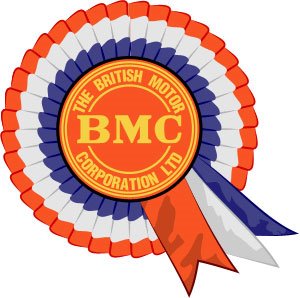

My BMC Farina 1622 cc website
by Shane Conway
Last updated on 19 August 2024.
| Email address | Farina history | My Morris Oxford 1999-2005 | My Austin A60 Countryman 2006-2011 | My Austin A60 Saloon 2018 onwards | The first column change Farina | Driving a Wolseley 24/80 |
After a seven year period of owning only a few 1:43 scale model Farinas, it was time to get back into a 1:1 scale example. Keeping an eye on internet sales sites, a Riley 4/Sixty-Eight cropped up first, with an original Irish reg number, probably the only such left now. However it would have meant a days travel by bus, tram and train just to see it, so I reluctantly had to forget about it. However, waiting in the wings as it were, was something equally as appealing, and just as rare. ZV 1329, a 1969 Austin A60 saloon was for sale, on the same sales site. Despite the seller's description, and the photos on the page, it was a few minutes before it sunk in that the car was left hand drive. Yes, an LHD Cambridge!! My initial thought was that it had been converted from right hand drive, but a phone call to the seller proved me wrong on that point.
The car began life on the production line in Cowley on January 9th 1969, rolling off the production line the following day, and being despatched on February 25th. On May 21st it was sold by Metcalfe Engineering of Tripoli Road, Benghazi, Libya to a British born banker based in Benghazi at that time, and received local registration 39751. Following the abolition of the local monarchy that autumn by one Muammar Gaddaffi, the car and its owners left Libya in 1970, and returned to England by first taking a ferry from Tripoli to Genoa, then driving across Europe to reach Southampton. 39751 was then issued with Isle of Wight registration RDL 541J in August 1970, and was to remain with the same owner until 1992.
A further two owners in the U. K. preceeded its export to Ireland in 2002 and getting its third registration, ZV 1329 in County Donegal. Viewing the car in November 2018 showed a vehicle which, although not in concours order, had certainly been well looked after and garaged most of its life. The fact of it being left hand drive and measuring its progress in kilometres instead of miles will undoubtedly set it apart from the rest of its contemporaries at any shows I bring it to in the future.
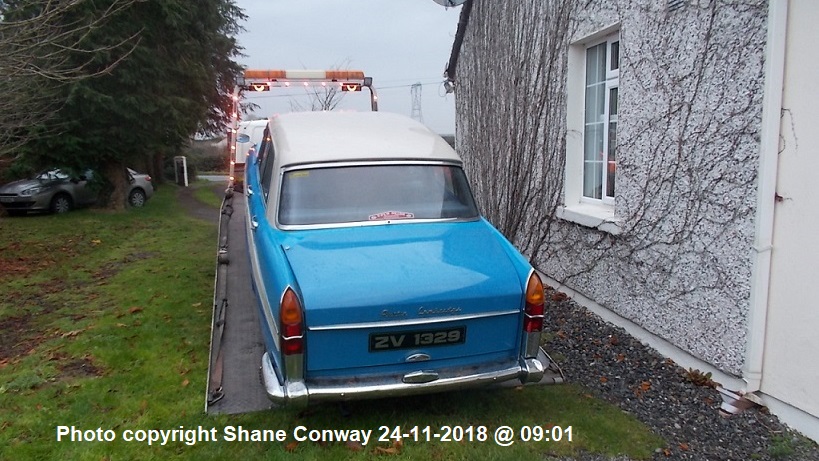
On 24th November 2018, the deal was finalised, money paid and car loaded onto a recovery truck for a 40 mile journey to its new home and its 7th owner in 49 years. After unloading, I just had to get behind the wheel of a Farina again, albeit mirror image compared to its predecessors. But that old familiar sound and feeling was just the same -- a classic Austin of the 1960s. It needed some small repairs and some bodywork doing, the incentive of the 60th anniversary of the first Farina sales spurring me on to have it ready.
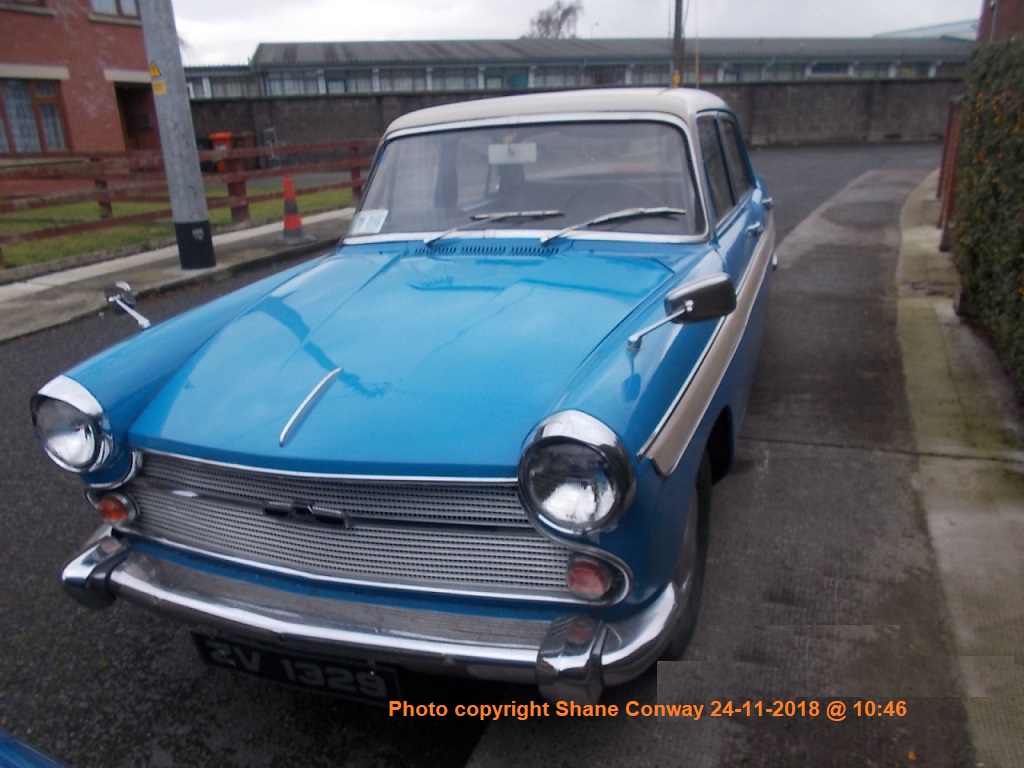
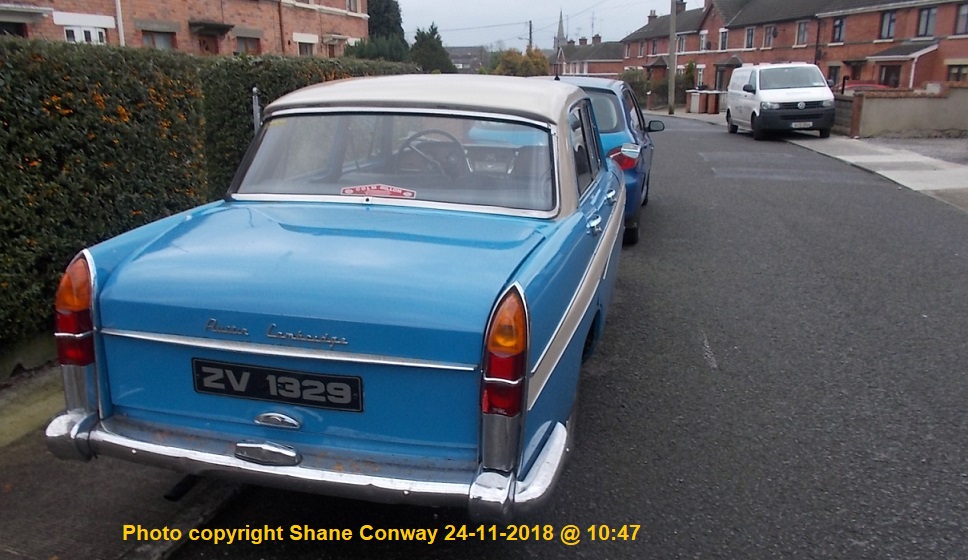
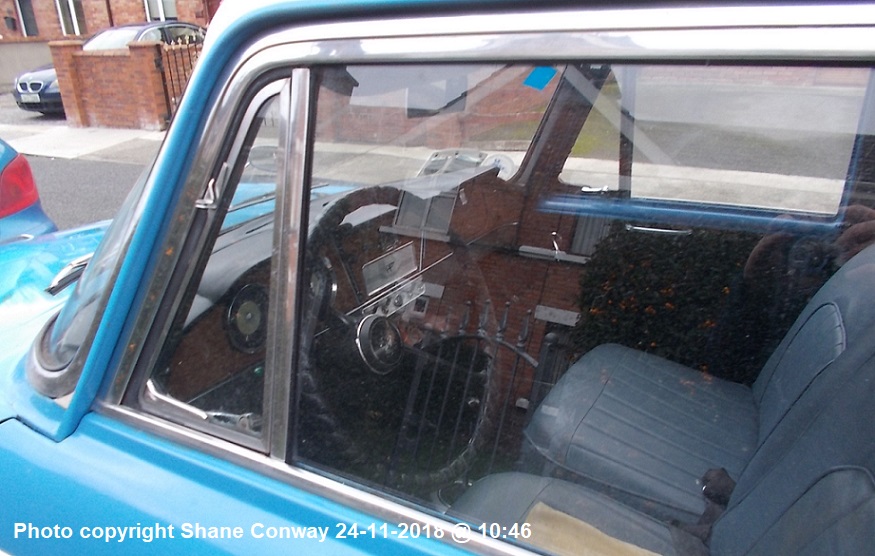
First job on the repair list was a complete brake overhaul. New pipes, brake shoes, wheel cylinders and a handbrake cable were all fitted as well as a new track rod end, in early January 2019. Next up was the righthand rear door, which was removed, repanelled, painted and reattached to the car. After that came some sundry electrical repairs, new spark plugs, two new tyres and a replacement tail light. As this work progressed, the car also made visits to some vintage shows and was well received. During July 2019 the Cambridge Oxford Owners Club held a weekend event at Swanwick Junction in Derbyshire to mark 60 years of these fabulous cars. In November 2019 the car was taken out of storage for a photo-shoot, which accompanied a feature on the 60th anniversary of the Farina range of cars in Irish Vintage Scene magazine, and also included a report on my visit to Farina 60 in July. Into 2020 and with the car now in roadworthy condition, tentative plans were made to visit some further shows during the year, until the plans were cancelled due to the Covid-19 outbreak. The opportunity to carry out further work was then acted upon and by the end of May 2020 the dynamo, driver's seat and the radiator had been all attended to. A final small item to be dealt with was replacing the tatty plastic number plates with pressed aluminium ones, giving the car a much more authentic look. Finally a full service was carried out and two new tyres fitted to the back axle. In lieu of visits to vintage shows the car has been used occasionally for shopping trips and drives to work.
During mid to late 2020 it was becoming obvious that the dreaded tin worm was taking over several bits of the car. As such repair work is way beyond my skill range, a professional would be needed. Keen to avoid having a quick bodge job done, I made enquiries and eventually the answer popped up on facebook when I spotted a freshly resprayed 1997 Toyota Starlet. A quick message to its owner brought forth a name and phone number, and better still the repair place was local to me. His inspection of the car and discussion about doing it convinced me he was the right choice, and the car was brought to him in mid April 2021.
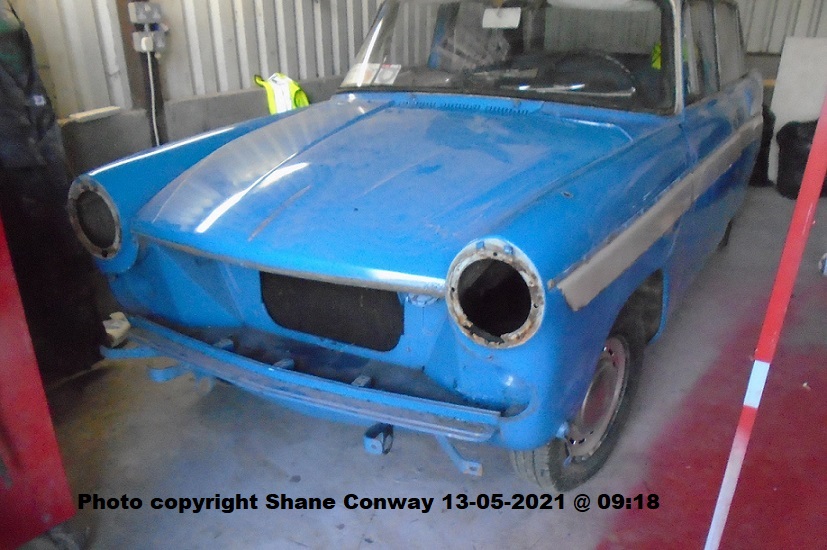
Once inside his premises, the stripping of the car began, and as this progressed it became clear that the decay was far more than at first thought. For various reasons the work has proceeded slowly, starting at the front and repairing that area before moving rearwards. Although some of the repairs used new metal supplied by the repair place, it was later decided to get more panels from NTG Services, as this would be easier than trying to fabricate panels with curves and angles and getting them correct.
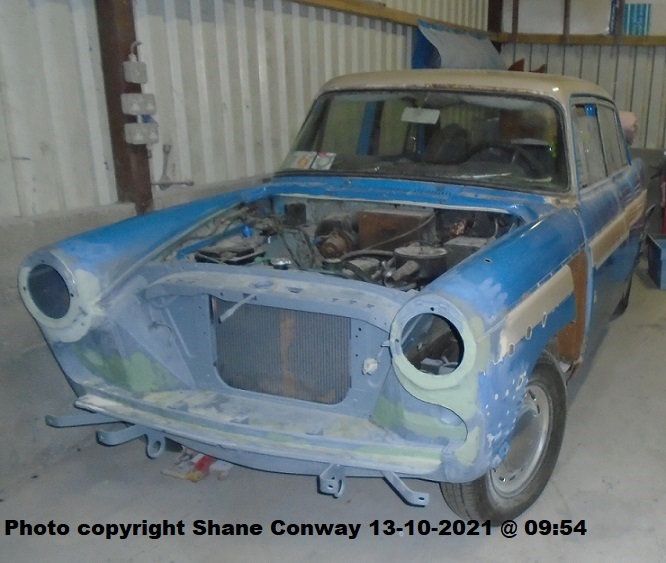
Into 2022, and the work is still ongoing. As of the end of May the entire front was done in primer, and the repair work on the drivers side was being done. In brief, it has got new panels on the front wing next to the door, the lower parts of both doors, inner and outer sills, the drivers floor, and around the rear wheel-arch. Underneath the various hidden bits such as the jacking point and inner wing valances have been done too. Each section being cut out, new item welded in and then coated in zinc primer. I received a photo of the car taken by the daughter of its original owners, on a snowy day around 1990. As noted above, this car was made on 9 and 10 January 1969, 39 days and 1,688 cars later production ended. A slightly later survivor than mine is a hearse, 298 serial numbers newer. It has to be wondered if these two are the newest A60s in existance? I am guessing that mine may be (a) the youngest surviving A60 saloon produced in the Cowley plant, (b) possibly the last left hand drive car produced, and (c) probably the only one ever sold and used in Libya.
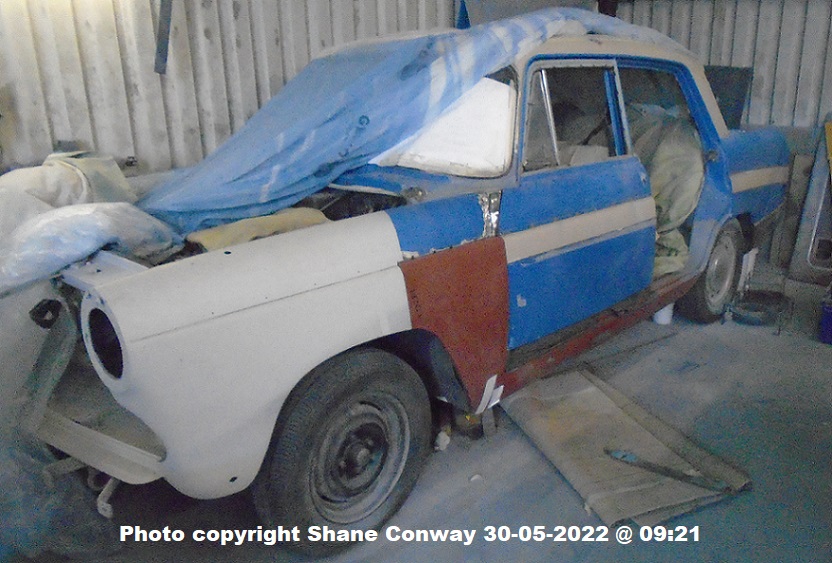
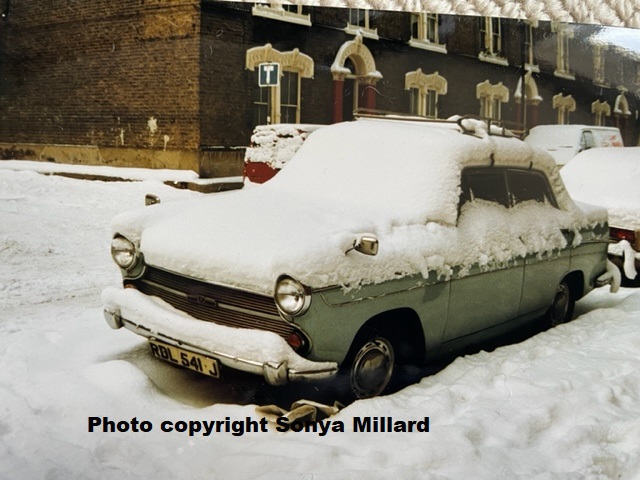
The A60 as photographed on a winter's day around 1990, showing its original single colour.
The work has progressed slowly but thoroughly during 2023. I had hoped to take it to Wales in June to attend a Cambridge-Oxford club event, but this was not to be. Despite this, it was brought to the garage where I get my servicing done, albeit on a recovery truck. I can only imagine what the garage owner thought when he seen it in its stripped state!! Once it was back with the restorer, he set about removing the front and back windscreens, which showed very little rust around the edges of the frame, thankfully. During late October all the welding was finally done, and it was masked up to receive a good coat of epoxy primer. After this it will be checked for any final bits that need doing, then a respray can take place and all the fittings can go back on. Further mechanical issues will be replacing the water pump, the wiper cable, and new brake flexi pipes on the front end. Hopefully these are the last bits it will need.
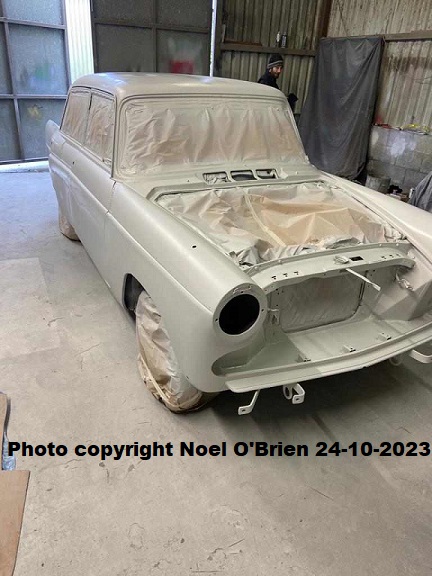
Having obtained a new wiper cable, I set about fitting it. A relatively easy job once the windscreen and dash board top are removed. It's of note that there is so much more room in an older car to do jobs like this and how much less complicated the actual mechanism is. The old one was removed and the new one installed (along with new wiper wheelboxes) in less than an hour.
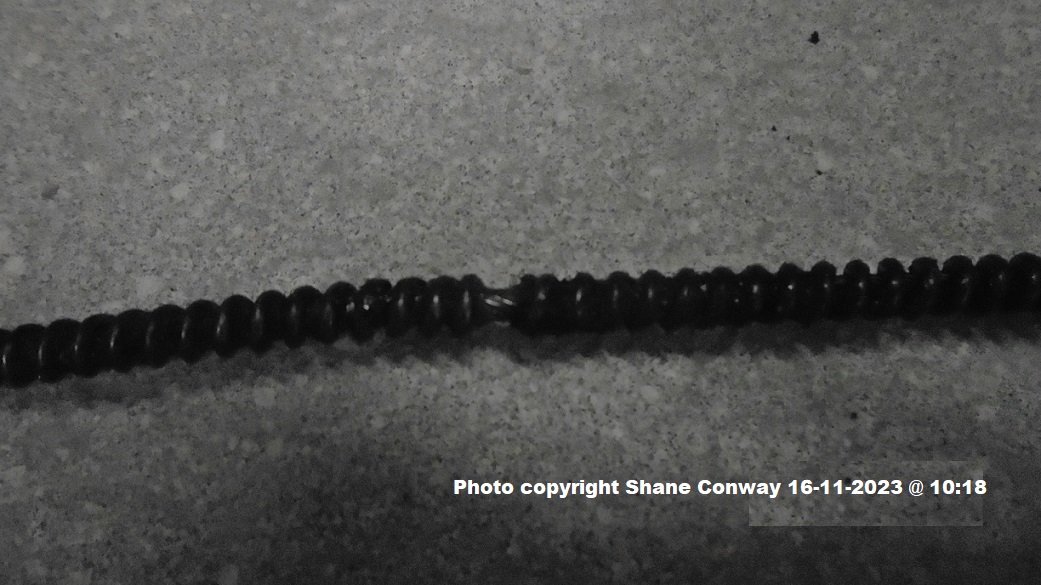
The old wiper cable showing the damaged bit of it. Its not unlikely that this is the same cable that was fitted when the car was on the production line 54 years earlier.
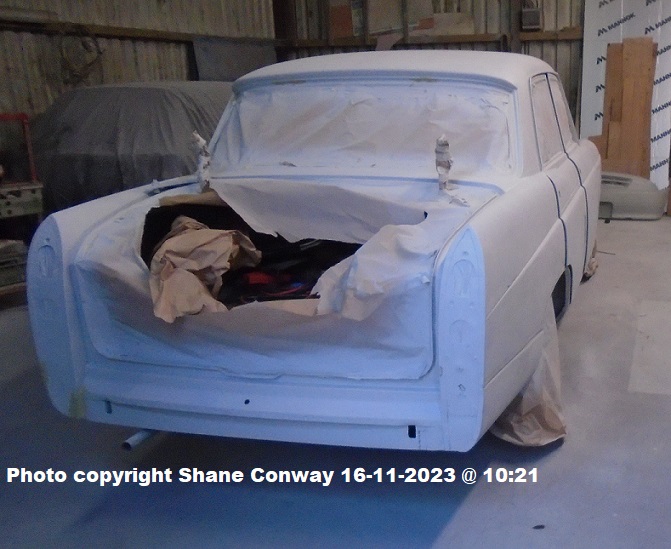
However the bootlid was to prove to be a major issue. It is curved from the window to the chrome strip above the number plate and from side to side. There is also the edges of the frame where the outer panels are joined to the inner one, all very time consuming and fiddly stuff to deal with. A replacement bootlid was obtained from a scrapped Wolseley 16/60, but this also turned out to be rusty here and there, albeit in different places to the Austin one. Again it would be the same issue, timewise, to try and sort it out. So what to do? New upper panels are unobtainable, just the upright one below the chrome strip can be got now. Then my ever resourceful restorer made an interesting suggestion -- why not make a complete panel from fibreglass? So I agreed, and a mould was made up from the bootlid, and from that a replacement panel was cast. As its not load bearing, it would be fine for its purpose and will remain rust free. After it was made, it can be attached to the restored framework and then move the restoration closer to its conclusion.
| Email address | Farina history | My Morris Oxford 1999-2005 | My Austin A60 Countryman 2006-2011 | My Austin A60 Saloon 2018 onwards | The first column change Farina | Driving a Wolseley 24/80 |